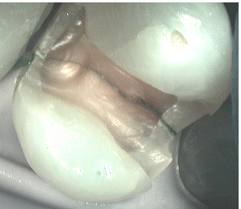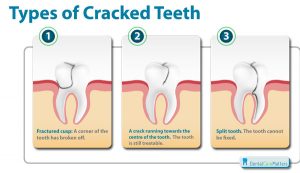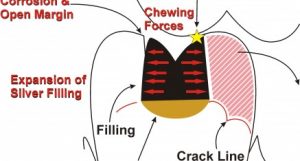 Cracks or fractures to teeth can be caused by trauma, biting on hard objects, and bruxism (grinding and clenching teeth). Cracks are increasingly common, because advances in home care, fluoridation and dental treatments are allowing people to retain their natural teeth longer than ever before.
Cracks or fractures to teeth can be caused by trauma, biting on hard objects, and bruxism (grinding and clenching teeth). Cracks are increasingly common, because advances in home care, fluoridation and dental treatments are allowing people to retain their natural teeth longer than ever before.
The symptoms of a cracked tooth can be confusing and may include pain when eating, sensitivity to hot and cold foods, and tooth pain with difficulty pinpointing the location. When the crack occurs there may be debilitating pain. Pressure on the tooth will widen the crack, exposing the nerve and causing pain or irritation. But when pressure is absent, the crack may partially fuse back together, and the pain may subside. Eventually, the pulp inside the tooth may become inflamed or infected, and pain will be constant.
If a tooth crack causes damage to the inner parts of the tooth, endodontic (root canal) treatment may allow the tooth to be saved. The damaged pulp or nerves will be removed, and the resulting space will be filled, then sealed and protected by a restoration (crown).
 In some cases, the crack may damage the structure of the tooth so that a root canal cannot be successful. If so, the tooth must be extracted to prevent pain and dangerous complications. An implant or bridge may be necessary to fill the gap left by the missing tooth.
In some cases, the crack may damage the structure of the tooth so that a root canal cannot be successful. If so, the tooth must be extracted to prevent pain and dangerous complications. An implant or bridge may be necessary to fill the gap left by the missing tooth.

